Sharks have been the subject of many shark myths and some really interesting science – from how sharks could be alive for 150 years to how they can live in the depths of the sea without breathing. In this article, you’ll read through 5 stages of a shark’s life cycle with fascinating facts about each stage!
Sharks are some of the most fascinating animals in the world. They are known for their razor-sharp teeth, powerful swimming ability, and intelligent behavior. Sharks are an important part of the ocean’s ecosystem, and their survival is essential for the health of the ecosystem as a whole.
Sharks belong to a group of animals called elasmobranchs. Elasmobranchs are characterized by their long snouts and streamlined bodies. These features help them to swim fast and efficiently through the water. Sharks are found all over the world, but they flourish in warm waters near the coast.
Sharks have a complex life cycle that involves several stages. In their early life stage, sharks are born with small teeth that they will use to feed on small prey items. As they grow older, these teeth will start to grow into larger and more dangerous teeth. At this point, sharks transition into their adult stage. In their adult stage, they will start to hunt larger prey items such as fish and sea mammals.
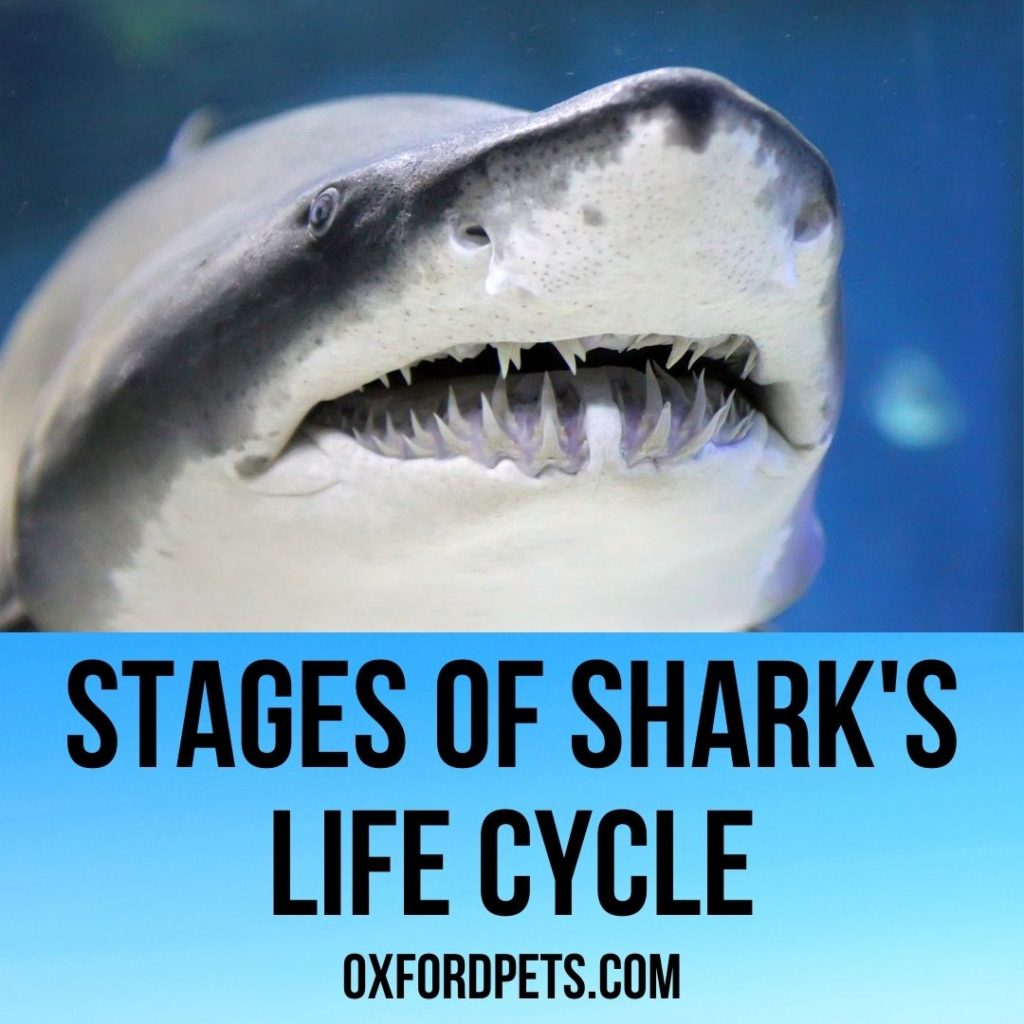
Contents
Shark Life Cycles stages
Sharks are a type of fish that live in the ocean. They have a very different life cycle than other types of fish. Sharks go through five different stages during their life cycle.
The first stage is the egg stage. Sharks’ eggs are laid in the water and they hatch into baby sharks. Baby sharks are very small and they don’t have any teeth yet. Baby sharks eat small fish and plankton.
The second stage is the juvenile stage. During this stage, baby sharks grow their teeth and they start to hunt larger prey. Juvenile sharks can be up to 2 feet long and weigh about 10 pounds.
The third stage is the adult stage. Adult sharks can be up to 20 feet long and they can weigh up to 600 pounds. Adult sharks are usually darker than juvenile sharks and they have more teeth.
The fourth stage is the reproductive stage. During this stage, adult sharks mate and give birth to babies. Baby sharks in the reproductive stage are called pups or litters. Pups in the reproductive stage grow rapidly and they start to hunt for food soon after they are born.
The fifth and final stage is the old age stage. Old age sharks usually die from natural
Shark Behavior and Ecology
Sharks are a diverse group of fish that live in oceans around the world. They are known for their powerful jaws and razor-sharp teeth. Sharks range in size from the tiny dwarf shark to the massive great hammerhead.
Sharks are carnivores, which means they eat meat. They have two main diets: piscivorous, which means they eat fish, and carcharodontous, which means they eat big marine mammals like whales. Sharks have a life cycle that includes four stages: egg, larva, juvenile, and adult.
During their egg stage, sharks float in the water column along with other plankton. The eggs are fertilized by a male shark and then they hatch into larva. The larva swims around looking for food and then transforms into a juvenile shark.
Juveniles hunt small prey like fish and crustaceans. Adult sharks typically don’t feed on anything other than small animals that they catch themselves.
Complete Life Cycles Stages Of Shark
Sharks are interesting animal and their life cycles are something that all of us should be aware of. Sharks go through a series of stages during their life cycles and understanding these stages is important if you want to be safe when swimming in the ocean.
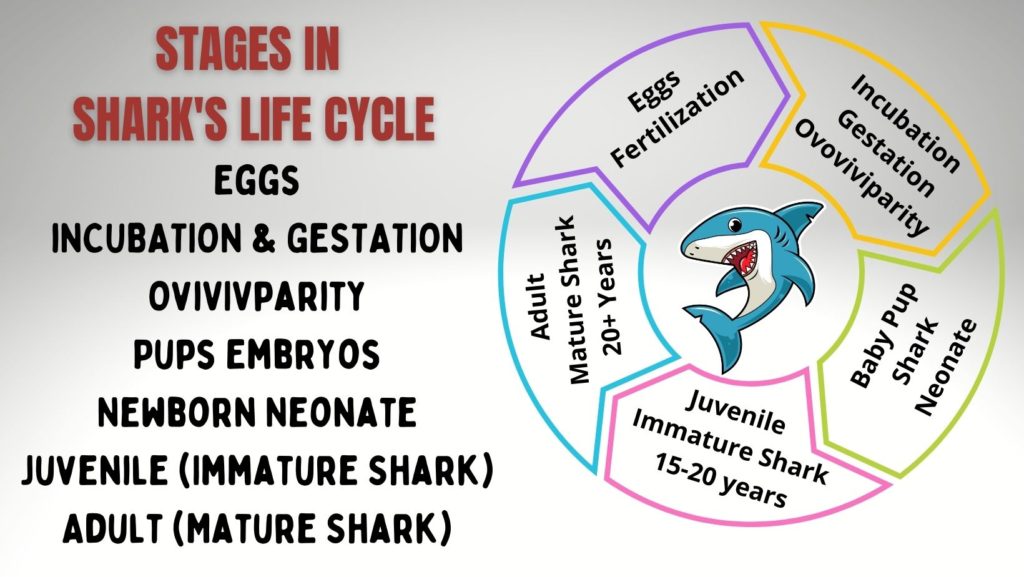
Stage 1: Fertilization/Eggs/Embryos
In order to reproduce, a shark must fertilize or eggs. Fertilization is when the male and female sharks meet and combine their nuclei. This process results in the creation of new embryos, which will become baby sharks.
Eggs are usually found in the form of a clump, and they are typically around the size of a grain of sand.
Male sharks use structures similar to a penis in order to fertilize female eggs internally. Researchers and scientists rarely witness mating, which is difficult to observe due to the elusive nature of these animals.
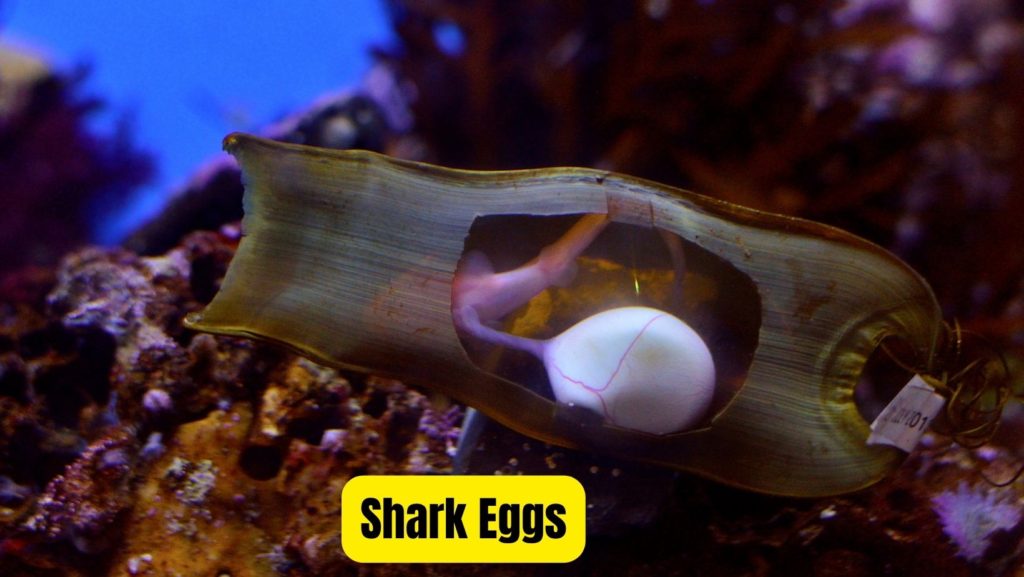
Embryogenesis.
After fertilization occurs, the embryo will form in the mother’s womb or the structure of the ovary. This stage is where a shark begins to develop its features and organs.
In this stage, embryos begin to grow and differentiate into their different functions. For example, nerve cells start forming from a single cell into nerve tissue in order to create nerves for swimming. Other organs such as gills or legs can also be formed at this time as well.
The embryo also enters the second stage of development, which is known as “embryonic development.” Here, internal organs are formed and become more complex as well as external parts such as fins or scales grow in size and complexity.
Stage 2: Incubation and Gestation
The stages of a shark’s life cycle can be broken down into incubation and gestation. Incubation is the time when the shark embryo develops in its mother’s uterus.
Gestation is the time when the embryo grows and matures into a baby shark. During this time, the baby shark must survive outside of the uterus while it waits to be born.
Sharks spend most of their lives in water, but they do come onto land to breed. When a female shark decides she is ready to mate, she enters into estrus and begins to release pheromones. These pheromones attract male sharks who will then try to mate with her. If the female is rejected, she may change her behavior and search for a different mate.
The gestation period for a shark can last anywhere from 12 to 18 months, but usually, it takes about 16 months. Once the baby shark is born, it must quickly learn how to survive outside of water. The baby shark will eat small fish and other animals that it can swallow whole. It will also hunt smaller prey such as birds or rodents.
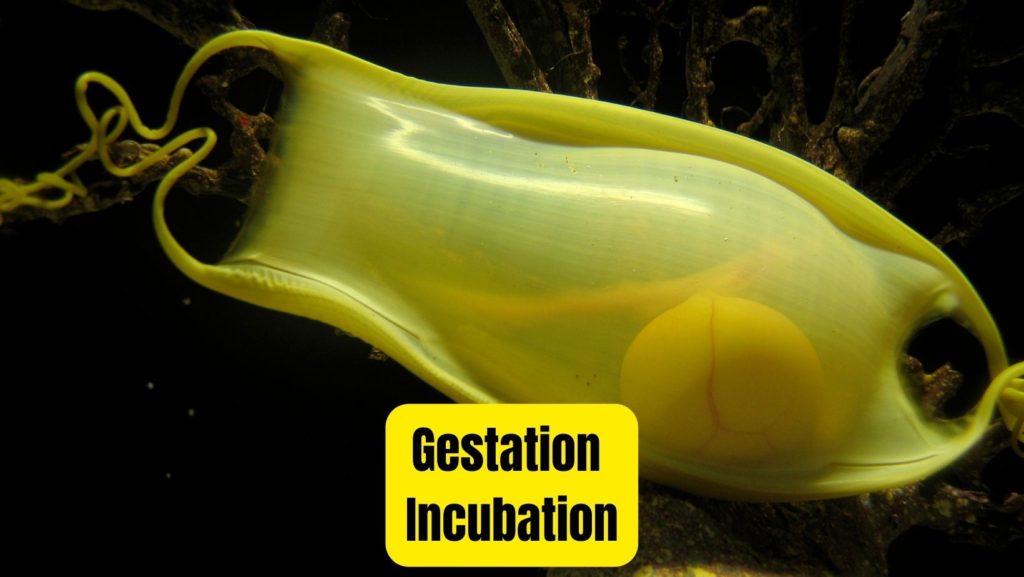
1) Oviparity
Oviparous animals lay eggs with little or no other embryonic development. This is the reproductive method of most fish, amphibians, most reptiles, and all pterosaurs, dinosaurs, and monotremes.
The life cycle of a shark starts with eggs that are laid in the water. The eggs hatch into tiny sharks that look very similar to baby dolphins. These baby sharks grow and learn how to hunt and survive in the wild.
As they get older, baby sharks begin to mate and produce eggs. After they lay their eggs, the mothers stay close to them for protection. It is important for the mothers to protect their babies because they will not be able to do this once they leave the safety of the school.
2) Viviparity
Viviparity is the stage of an organism’s life cycle during which the organism gestates eggs in the absence of a male. Viviparity is found in some aquatic placental mammals, such as the American alligator, and in some marsupials, such as the kangaroo.
Some animals, including sharks, are viviparous for part of their life cycle. Sharks typically have four stages during their life: egg, fetus, juvenile, and adult.
Sharks typically have a reproductive cycle that lasts about 12 months. During this time, they will reproduce through ovulation and fertilization. After they reproduce, they will go through a process called embryonic diapause to conserve energy.
3) Ovoviviparity
Animals who hatch from eggs that are within the mother’s body until they are ready to hatch are called ovoviviparous. This type of animal has embryos that develop inside eggs that remain in the mother’s body until hatching.
In some sharks, the eggs are protected by a thin, permeable membrane. These eggs sometimes grow close together to form a cluster, which is called a candle.
Fishes are classified into two groups: elasmobranchs and cartilaginous fish. Elasmobranchs include sharks, rays, and skates. Cartilaginous fish include sharks, bony fishes, and tunas.
Sharks are ovoviviparous. This means that they give birth to live young. Only the male carries and gives birth to the eggs while the female stays in the uterus until it hatches.
Ovoviviparity is a reproductive mode where the embryo develops inside the womb (such as in cats, dogs, and humans), but after hatching it remains inside of its mother’s body for several weeks or months depending on the species. This assures that the young reach maturity before being released into the open ocean.
4) OOphagy/Ovophagy
Ovophagy or OOphagy is an egg-eating practice of embryos developed in the ovary while within the mother’s uterus.
One of the most important stages in a shark’s life cycle is oophagy. Oophfagy is when a shark eats another fish, and it is an important process because it helps to increase the size of the shark population.
The oophagy process begins with the shark biting into the other fish’s flesh. This causes the victim’s blood to flow into the shark’s mouth and stomach, which increases their appetite and allows them to eat more food. The blood also provides nutrients that help the shark grow larger.
Oophagy is an essential part of the shark’s life cycle because it allows them to grow in size and number. It helps to keep the population size healthy, which is important for their survival.
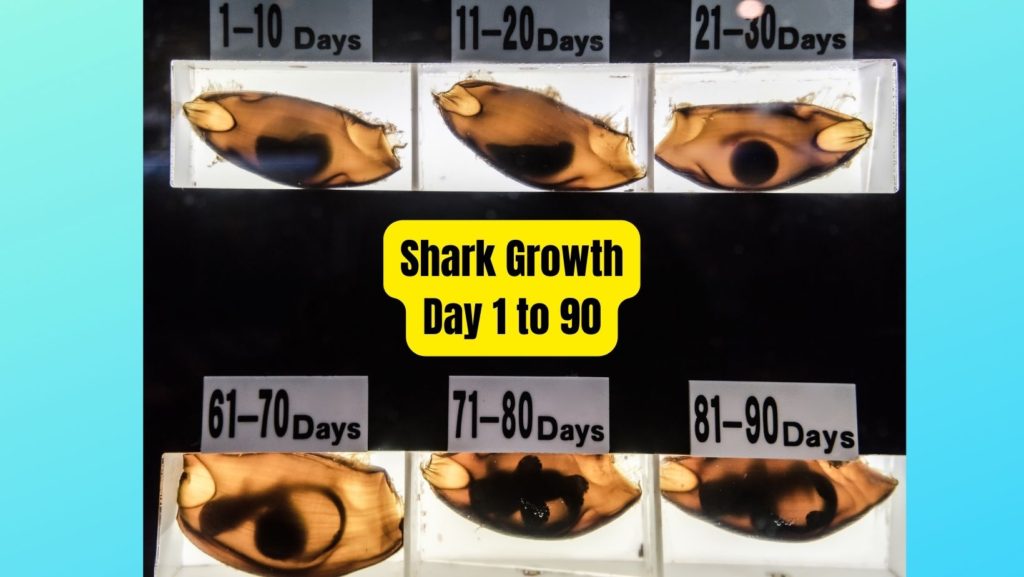
Stage 4: New Born Pup (Neonate)
Welcome to the fourth stage of a shark’s life cycle! During this stage, known as the neonate, newborn sharks are growing and developing rapidly.
Newborn sharks are small and very vulnerable. They need plenty of food and protection to survive.
During the neonate, newborn sharks feed mainly on zooplankton. They swim around quickly in search of food, and they sometimes bite other fish in order to eat them.
Newborn sharks grow very quickly during this stage. Their length can increase by up to 50% in just a few weeks!
The neonate is a critical time for newborn sharks, and they need lots of help from their parents to survive. Parents provide food, shelter, and protection for their young. They also teach young sharks how to survive in the wild.
During the first few weeks of life, newborn sharks are often very weak and will not be able to hunt for food on their own.
Newborn sharks also need a lot of protection from predators, so they have one other thing that helps them survive: camouflage! They use special cells called chromatophores to color themselves in different shades and patterns.
Because these cells can change color so quickly, it is almost impossible for any predator to find the shark and attack it! If newborns are attacked by a predator, their parents usually come to help them. Baby sharks will either be eaten or go back into hiding after being attacked by a predator!
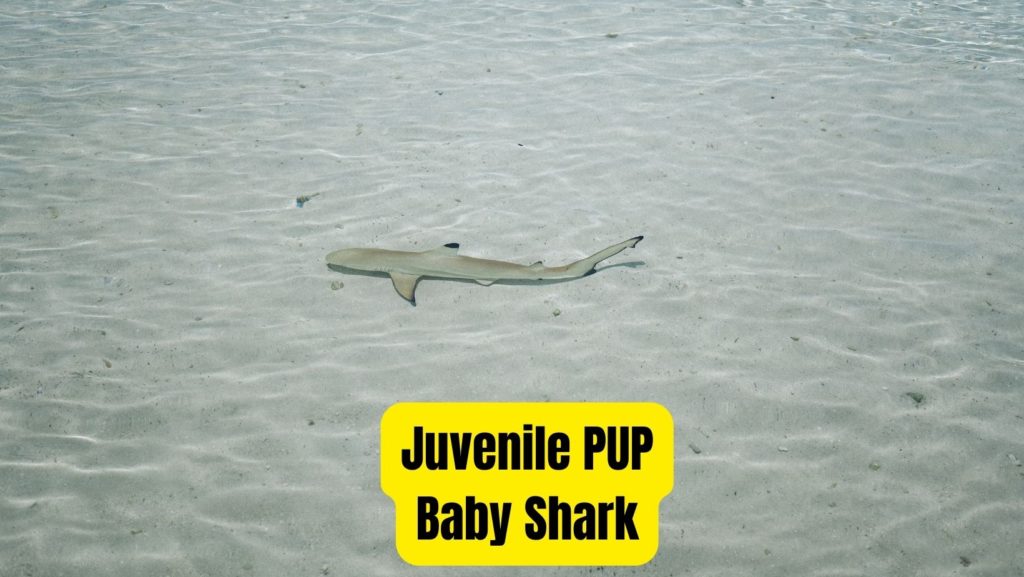
Stage 5: Young Juvenile (Immature Shark)
Sharks usually take 15-20 years to mature into adults. This stage in a shark’s life cycle is its growing period. Most sharks stay near their place of birth until they’ve grown into adulthood. Many of them die from human interference in their environment.
When sharks are young, they are called juveniles. Juveniles are born with a lot of energy and enthusiasm, but they don’t yet have a lot of experience. Young sharks need to learn how to survive in the wild, and this process starts with their first few years of life.
Juveniles spend most of their time hunting for food. They hunt small animals such as fish, amphibians, and insects. Juveniles also eat large prey such as marine mammals, sea turtles, and other sharks.
During their early 15 years, juveniles grow very quickly. Their bodies grow in size and they develop strong muscles. This is a time when the young sharks learn how to survive in the world.
As juveniles grow older, they start to learn about their environment and how to protect themselves. They learn how to swim away from danger and how to defend themselves against predators.
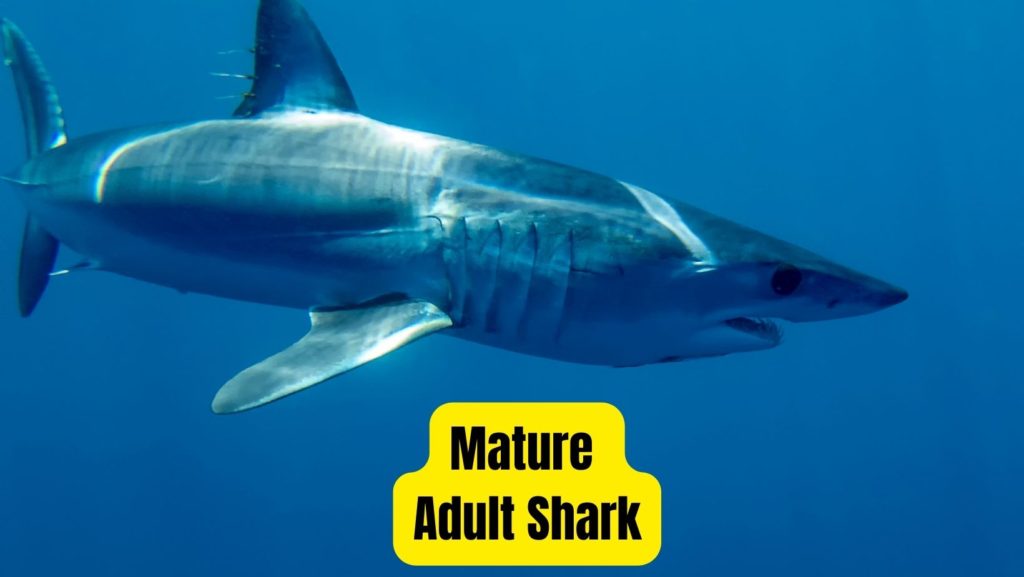
Stage 6: Adult (Mature Shark)
At this stage of the shark life cycle, adults are considered mature. They are larger and stronger than juveniles and can produce more offspring.
Shark reproduction occurs when they reach adulthood. Sharks have a different mating structure than most other animals on the planet, having two penises that they can use to grab onto and insert sperm into the female shark’s cloaca.
Most sharks only live for 20-30 years but some, like Spiny Dogfish, may live up to 100 years old.
Adults may live up to 25 years in the wild, but they can live up to 50 years in captivity. They are typically solitary animals, but they sometimes form social groups.
Adult sharks feed mainly on fish and other marine animals, but they will also eat smaller animals if they are available. They use their sharp teeth and claws to catch their prey.
Adult sharks are oviparous, which means that they lay eggs instead of giving birth to live young. After fertilization, the eggs develop into embryos for about a year before hatching. The newly-born sharks grow rapidly and reach sexual maturity within a few months.
Shark Feeding
One of the most important stages in a shark’s life is feeding. Sharks feed on different types of fish, and their diet depends on their lifestyle and size.
Feeding is one of the main reasons sharks are such predators. They use their sharp teeth and jaws to catch and swallow prey. Feeding helps sharks to grow and sustains them during their long journey through the water.
Sharks feed in different ways, depending on their size and lifestyle. Some sharks feed mainly at night while others feed during the day. Some sharks feed in open waters while others feed in the depths of the ocean.
Feeding is an important stage in shark’s life, and it helps them to grow and sustain themselves during their long journey through the water.
- You May Also Like To Read
- What Fish Are Good For Nano Tanks?
- 8 Amazing Fish You Can Keep as Pets
- Types of Shark Fins and their meaning
20 Surprising Shark Facts
Sharks are some of the most fascinating creatures on the planet. They play a vital role in the ocean ecosystem and have a fascinating life cycle.
Here are 20 surprising shark facts:
- Sharks are the only fish that can regenerate their limbs.
- Most Sharks can swim up to 50 miles per hour!
- Sharks can detect food in murky water using their sensitive nose flaps.
- Sharks have one of the strongest jaw muscles in the animal kingdom!
- Whale Sharks mostly have bulletproof skin Texture.
- Sharks can survive for up to two months without food or water.
- Sharks eat a variety of different animals, including other sharks, sea turtles, and small fish.
- Female sharks give birth to between one and six young babies at a time.
- Baby sharks use their gills to breathe underwater for the first few weeks of birth.
- Male sharks sometimes attack female sharks during mating in order to protect their territory.
- There are 143 Endangered and over 500 species of shark in existence.
- Sharks are apex predators of their marine ecosystem.
- Most sharks are cold-blooded animals like amphibians.
- Sharks do have a sixth sense as we do.
- Sharkskin is rough and feels like sandpaper.
- Most Shark Species are Equipped with electroreceptor organs.
- Most sharks Species have good eyesight and No Bones.
- We Can Estimate Sharks Age By counting the rings on its vertebrae.
- Whale sharks’ spot patterns are unique as a fingerprint.
- Shark Species are Both oviparous (egg-laying) and viviparous (live-bearing).
Summary
Sharks are one of the most diverse and abundant creatures on Earth. They have a complex life cycle that consists of several stages.
Sharks start their lives as embryos in the water. During this stage, they develop into juvenile sharks. After they reach this stage, they begin to hunt for food. As they grow older, they transition into their adult form and begin to reproduce. Finally, after they have reproduced, they undergo a final stage in which they die.
![6 Stages Of Sharks Life Cycle [2022 Guide]](https://oxfordpets.com/wp-content/uploads/2022/05/stages-of-sharks-lifecycle.jpg)